Exploring Different Organic Mulch Options for Your Garden
- January 4, 2024
- 0 comment
Being an ardent gardener, my unwavering belief in the soil as the cornerstone of a flourishing garden led me to delve into the world of organic mulch. Intrigued by the touted benefits, I made the conscious decision to initiate a personal quest in search of the ideal organic mulch for my cherished green sanctuary. Walk alongside me as I recount the narrative of my firsthand exploration, unraveling the nuances of diverse organic mulch options and uncovering the specific variant that yielded remarkable results for my garden.
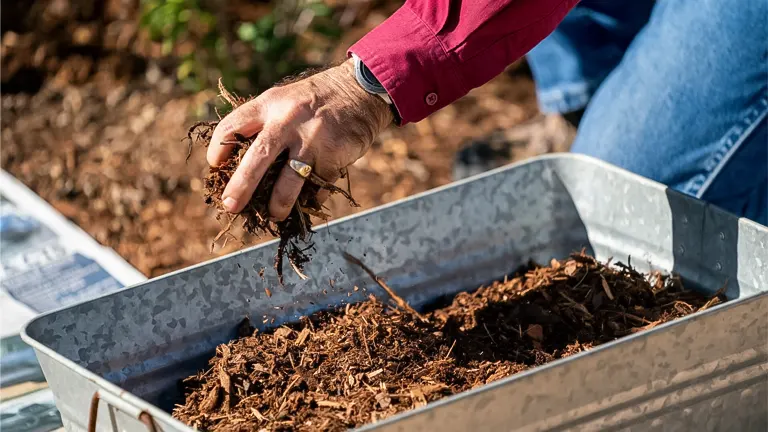
Choosing the right mulch materials is a crucial decision for any garden enthusiast. These materials play a pivotal role in enhancing soil health, managing weeds, and preserving moisture. In this comprehensive exploration, we will delve into a variety of mulch materials, offering detailed insights to assist gardeners in making informed choices for their green sanctuaries.
Types of Mulch Materials List:
- Organic Mulches
- Inorganic Mulches
- Understanding Mulch
- Benefits of Mulching
- Considerations in Mulching
- The Role of Mulch in Sustainable Gardening
- Choosing the Right Mulch for Your Garden
- Factors to Consider
- Tailoring Mulch Choice to Gardening Goals
- Mulching Sloped Areas
- Common Mistakes to Avoid
- Frequently Asked Questions
Beyond being a mere accessory, mulch holds a key position in maintaining the overall well-being of plants and soil. A well-selected mulch material has the potential to revolutionize your garden, providing advantages such as effective moisture retention, temperature regulation, and efficient weed control. However, it is imperative to recognize that not all mulch materials are crafted with the same purpose or effectiveness.
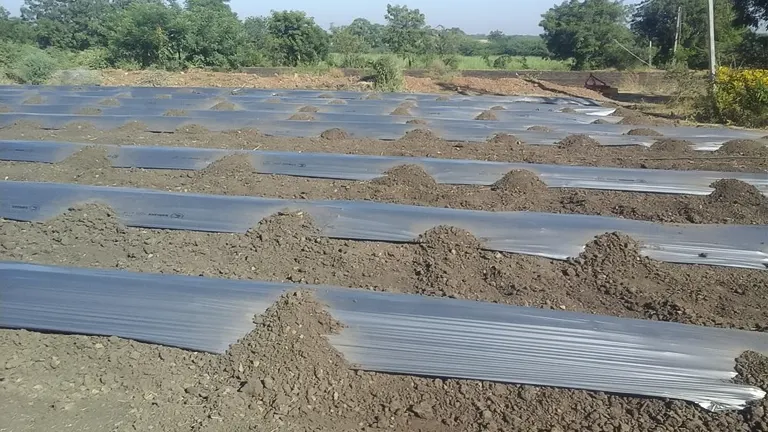
This segment of the article will intricately examine various types of mulch materials, with a primary focus on the organic options available. Each type boasts distinct properties and applications, necessitating a thorough understanding of the choices at your disposal. By the end of this exploration, you will be equipped with valuable knowledge to make informed decisions tailored to the unique needs of your garden.
1. Organic Mulches
Derived from natural materials that break down over time, organic mulches contribute to soil enrichment by releasing valuable nutrients. Embracing an eco-friendly approach, they align with the natural cycle of growth and decay within your garden.
Bark Mulch
Frequently sourced from pine, cedar, or cypress trees, bark mulch stands out for its durability and visual appeal. Its gradual decomposition ensures extended soil protection, making it a preferred choice for trees and perennial beds. Additionally, bark mulch’s natural oils act as a deterrent to certain pests. Despite its benefits, it’s worth noting that this mulch option can be relatively pricey and may face the risk of floating away in heavy rainfall.
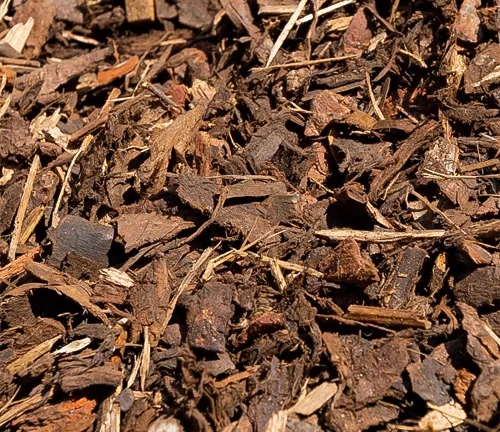
Straw Mulch
Affordable and efficient, straw emerges as an excellent mulch option, especially for vegetable gardens. Its lightweight nature facilitates easy spreading, and it offers robust insulation for the soil. Particularly advantageous for newly seeded areas, straw mulch shields seedlings from adverse weather conditions.
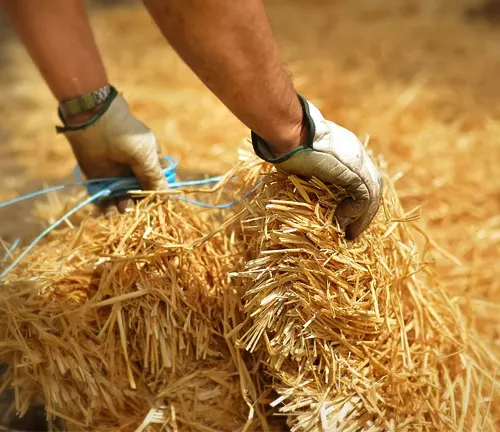
Leaves Mulch
Often underestimated, shredded leaves prove to be a readily available mulching alternative, especially during the fall season. This cost-effective option quickly decomposes, introducing valuable organic matter to the soil. Well-suited for flower beds and areas around shrubs, shredded leaves prevent matting that may impede water and air from reaching the soil.
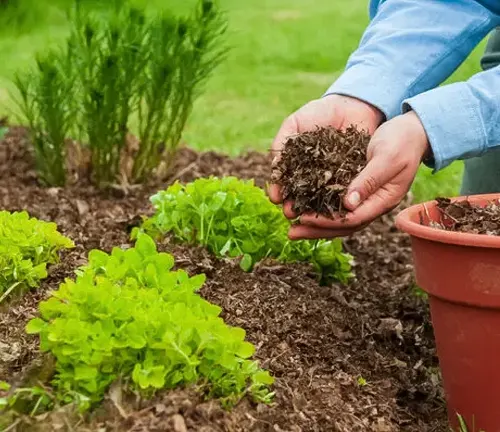
Grass Clippings Mulch
Freshly cut grass can serve as an effective mulch, particularly beneficial for vegetable gardens. Abundant in nitrogen, grass clippings support healthy plant growth. To prevent matting, it’s crucial to apply them in thin layers and to use clippings from lawns devoid of pesticides.
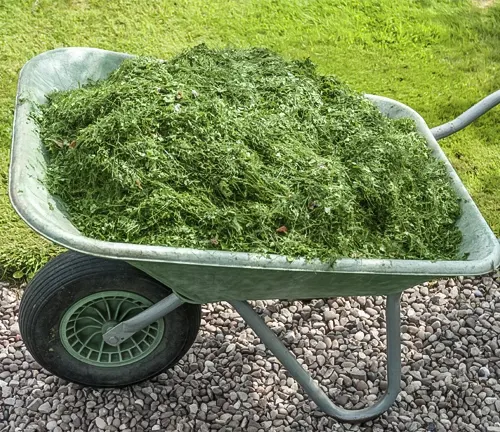
Compost Mulch
More than just a soil amendment, compost emerges as an excellent mulch material, providing insulation, moisture retention, and nutrient enrichment as it breaks down. Particularly advantageous for improving nutrient-poor soils, compost promotes robust plant growth. However, careful processing is essential to avoid potential weed seeds in the compost.
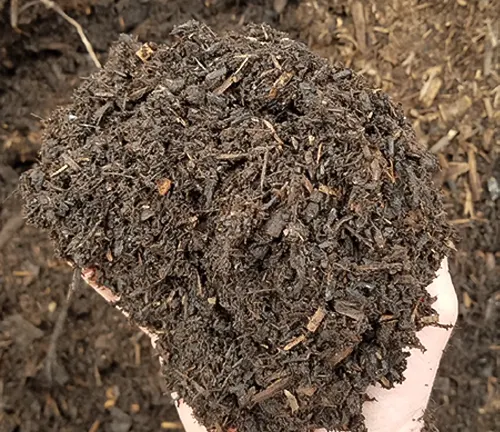
Wood Chips Mulch
Versatile and suitable for various garden types, wood chips prove effective for pathways and expansive areas. While offering slow decomposition and long-lasting coverage, they have the tendency to deplete soil nitrogen during the breakdown process. To counter this, supplementing with a nitrogen fertilizer is recommended when using wood chips.
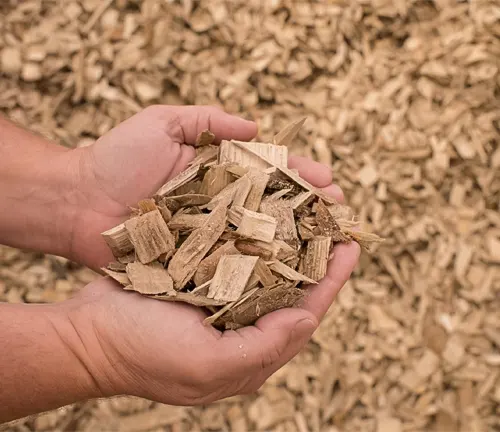
2. Inorganic Mulches
Contrary to organic counterparts, inorganic mulch materials consist of non-living substances that serve as a protective covering for the soil. Distinguished by their lack of decomposition, these materials offer a low-maintenance solution, requiring less frequent replenishment. Ideal for prolonged use and specific landscaping requirements, in this section, we explore the most prevalent types of inorganic mulch materials and their versatile applications.
Stones and Pebbles
Renowned for their decorative allure and enduring quality, stones and pebbles are a favored choice. They excel in creating a sleek, contemporary appearance in garden beds and along pathways. Particularly effective in regions susceptible to drought, these mulch materials reflect heat, aiding in soil moisture conservation. However, their weight can pose a transportation challenge, and rearranging them may be difficult if you decide to alter your garden layout.

Rubber Mulch
Crafted from recycled tires, rubber mulch emerges as an eco-conscious selection for environmentally aware gardeners. Boasting longevity and exceptional soil insulation, rubber mulch is frequently employed in areas where shock absorption is essential, such as playgrounds. Despite its durability, it does not contribute nutritional benefits to the soil and may be priced higher compared to alternative options.

Plastic Sheeting
A staple in commercial agriculture, plastic sheeting proves effective for weed suppression and moisture retention. Commonly utilized in vegetable gardens, especially for heat-loving plants like tomatoes and peppers, plastic sheets warm the soil and maintain moisture levels, fostering accelerated growth. Nevertheless, being impermeable, plastic hinders the penetration of water and air, rendering it a less eco-friendly option.

Landscape Fabric
Functioning as a breathable inorganic mulch, landscape fabric permits the passage of air and water to the soil while concurrently thwarting weed growth. Commonly employed beneath other mulch types like bark or stones, it enhances weed control efficacy. Despite its effectiveness, over time, soil and organic matter may accumulate on the fabric’s surface, creating conditions conducive to weed growth.

Gravel Mulch
Offering another inorganic mulch alternative, gravel stands out as an excellent choice for pathways, driveways, and areas where minimal maintenance is desired. It facilitates good drainage and exhibits stability. However, it is worth noting that gravel has the tendency to gradually settle into the soil over time, requiring periodic replenishing or regrading for optimal maintenance.

3. Understanding Mulch
Delving into the intricacies of mulch reveals a multifaceted role that extends far beyond its visual appeal in a garden setting. Mulch, in essence, is a protective layer of material spread over the soil surface, serving as a versatile ally in promoting plant health and facilitating optimal gardening conditions. While the aesthetic enhancement it provides is undeniable, mulch plays a pivotal role in maintaining soil moisture by reducing evaporation, moderating soil temperature, and preventing erosion.
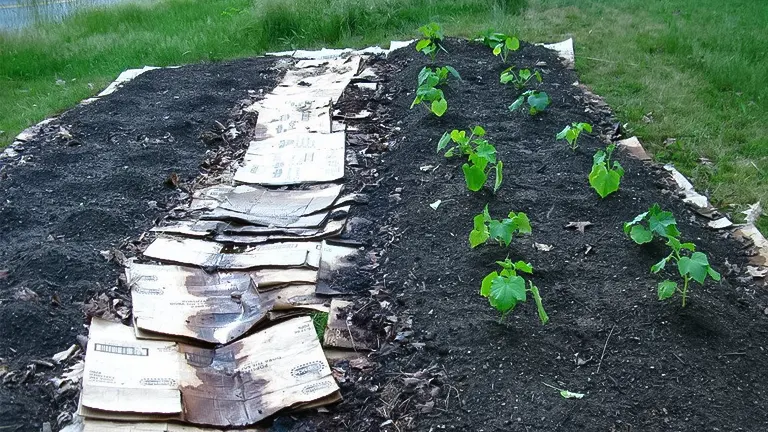
Moreover, it acts as a natural weed suppressant, creating a barrier that hinders weed growth and competition for nutrients. Understanding the diverse functions of mulch unveils its significance as a dynamic component that contributes to the overall well-being of a garden ecosystem.
To make informed choices about mulch, gardeners must comprehend the array of materials available and their specific benefits. Organic mulches, derived from natural substances like bark, straw, or leaves, enrich the soil as they decompose, providing essential nutrients for plant growth. On the other hand, inorganic mulches, such as stones, rubber, or plastic sheeting, offer low-maintenance solutions and are often chosen for their durability and longevity.
By breaking down the basics of mulch materials and their roles, gardeners gain the knowledge needed to tailor their choices based on the unique needs of their garden, ultimately fostering a thriving and sustainable horticultural environment.
What is Mulch?
Mulch, in gardening terminology, pertains to any substance applied to the soil’s surface. Its primary function is to safeguard and enhance the soil environment. Mulch materials come in two main categories: organic, such as bark or straw, and inorganic, such as stones or plastic sheeting. Each type is chosen for distinct purposes, contributing diverse benefits to the overall health and vitality of the garden
4. Benefits of Mulching
Weed Management: Mulching plays a pivotal role in impeding the germination and growth of weeds, diminishing the necessity for frequent weeding efforts.
- Preservation of Soil Moisture: The application of mulch materials over the soil surface significantly reduces evaporation, extending the duration of soil moisture retention.
- Regulation of Temperature: Serving as an insulating layer, mulch effectively moderates soil temperature, ensuring warmth in winter and coolness in summer.
- Enhancement of Soil Health: Organic mulches contribute to the improvement of soil health as they decompose over time, introducing essential nutrients and refining soil structure.
- Erosion Mitigation: Mulch materials serve as a protective buffer against soil erosion by mitigating the impact of raindrops and minimizing water runoff.
- Pest Deterrence: Specific types of mulch, like cedar bark, exhibit pest-deterring properties attributed to their natural oils, contributing to a more resilient garden ecosystem.
5. Considerations in Mulching
While the benefits of mulching are numerous, it is imperative to apply this practice judiciously. The quantity of mulch material matters, as an excess, can potentially suffocate plant roots, while insufficient coverage may fail to effectively suppress weeds or retain moisture in the soil. Striking the right balance is key to reaping the rewards of mulching.
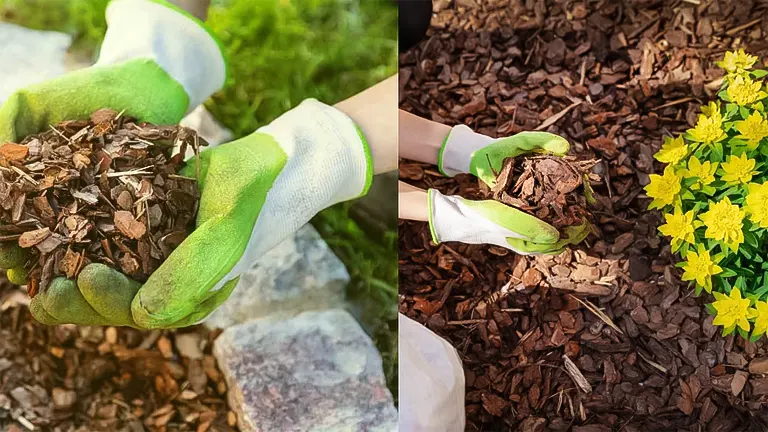
Additionally, the timing of mulch application is critical, influencing its effectiveness in weed control and moisture conservation. The choice of mulch material, tailored to the specific plant types and prevailing climate conditions, further contributes to the overall success of this gardening practice.
6. The Role of Mulch in Sustainable Gardening
Mulch emerges as a cornerstone in sustainable gardening practices, playing a pivotal role in fostering environmentally conscious approaches. Organic mulch materials not only contribute to soil health by enhancing biodiversity but also reduce the reliance on chemical fertilizers.
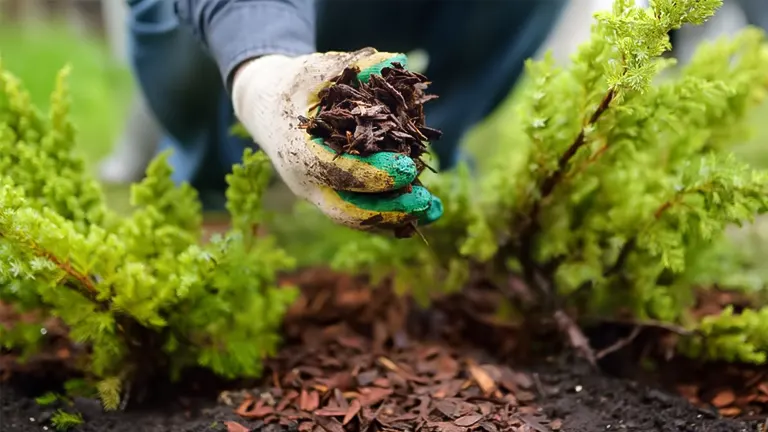
Even inorganic mulches play their part in sustainability by curbing water usage and minimizing maintenance requirements. Understanding the ecological impact of mulch choices is fundamental in aligning gardening practices with sustainable principles, promoting a harmonious coexistence between cultivated landscapes and the broader environment.
7. Choosing the Right Mulch for Your Garden
The selection of the right mulch is a pivotal decision that can profoundly impact plant health and soil quality in your garden. This section serves as a guide, offering insights into the diverse mulch options available and helping you navigate the decision-making process.
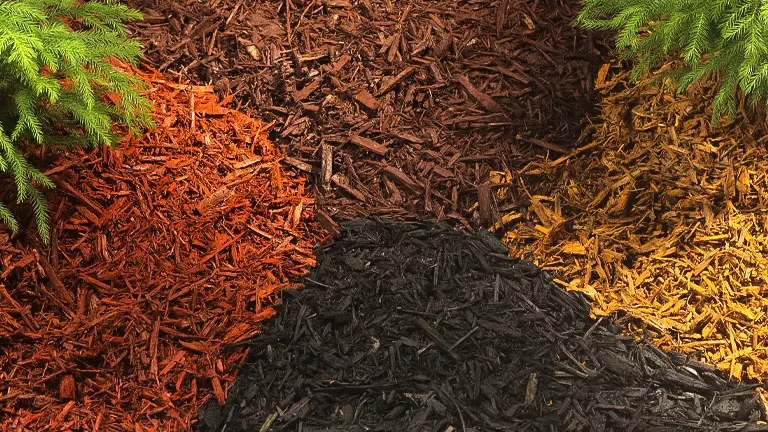
By understanding the specific needs of your garden, considering plant varieties, and factoring in environmental conditions, you can make an informed choice that not only enhances the visual appeal but also fosters a thriving and resilient garden ecosystem.
8. Factors to Consider
When selecting mulch materials, several key factors should be considered to ensure your choice aligns with your gardening needs and goals.
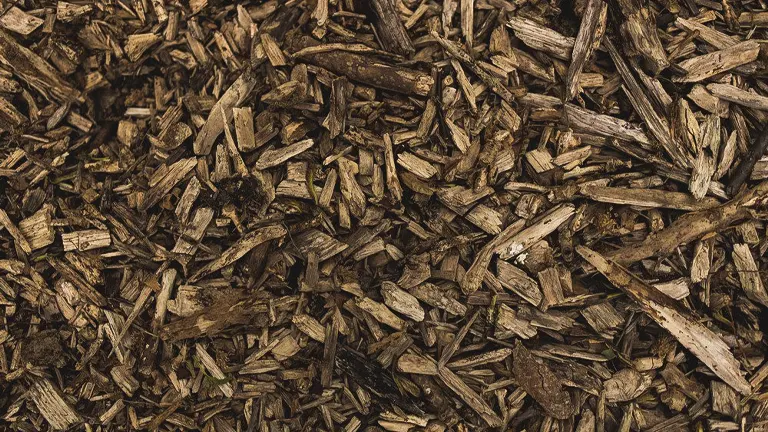
Soil Type
- Texture and Drainage: Consider your soil’s texture and drainage capabilities. Sandy soils, which drain quickly, may benefit from moisture-retaining organic mulches like compost or bark. Clay soils, which retain moisture, might work better with lighter mulches that don’t hold excessive moisture.
- pH Level: Some mulches can affect soil pH. Pine needles, for instance, can make soil more acidic, benefiting acid-loving plants like azaleas and blueberries.
Plant Types
- Specific Needs: Different plants have varying mulch needs. Vegetable gardens thrive with organic mulches like straw, which decompose and enrich the soil. Perennials might need a protective layer of bark mulch to insulate their roots.
- Growth Stages: Young plants might need finer mulches that are easier to push through, whereas established plants can handle heavier mulches.
Climate Conditions
- Temperature Fluctuations: In extreme temperature variations, insulating mulches like wood chips can protect plant roots from freezing or overheating.
- Precipitation Levels: In wet climates, avoid mulches that retain too much moisture, which could lead to root rot. In arid regions, choose mulches that effectively conserve water.
Aesthetic Preferences
- Visual Appeal: Consider the look you want to achieve in your garden. Decorative stones might suit a formal garden, while organic mulches offer a more natural look.
- Consistency: For a cohesive appearance, choose a mulch material that complements the colors and textures of your garden.
Environmental Concerns
- Sustainability: Opt for mulch material sourced from sustainable materials, like locally produced organic mulches or recycled rubber.
- Impact on Local Ecosystem: Be mindful of how your mulch choice affects the local ecosystem. Avoid invasive or non-native materials that could disrupt local biodiversity.
Maintenance and Longevity
- Durability: Consider how long different mulch types last. Organic mulches need replacing as they decompose, while inorganic options like pebbles are more permanent.
- Ease of Maintenance: Some mulches, like plastic sheeting, require less upkeep, whereas organic options might need more frequent replenishment.
Cost and Availability
- Budget: Your budget can significantly influence your choice. While organic mulches may be more affordable initially, inorganic mulches might offer better long-term value.
- Local Availability: Consider the availability of mulch materials in your area. Locally sourced materials are often more cost-effective and environmentally friendly.

By taking these factors into account, you can make an informed decision, selecting a mulch that not only enhances the visual appeal of your garden but also contributes to its overall health and sustainability. The right mulch can significantly impact your gardening success, fostering a thriving, beautiful, and eco-friendly landscape.
9. Tailoring Mulch Choice to Gardening Goals
Selecting the right mulch transcends mere practicality; it involves aligning your gardening choices with specific objectives. Whether cultivating a lush vegetable garden or crafting a serene landscape, the type of mulch becomes a pivotal factor.
- Enhancing Soil Fertility: For gardeners aiming to improve soil health and fertility, organic mulches like compost or well-rotted manure prove ideal. These materials gradually break down, enriching the soil with nutrients, and are particularly beneficial in areas where soil quality directly impacts plant health.
- Water Conservation: In water-conscious gardening or regions with limited water resources, choosing mulches like straw or wood chips becomes crucial. These organic options effectively retain soil moisture, reducing evaporation and maintaining consistent moisture levels, especially vital for drought-tolerant landscaping.
- Pest and Disease Control: Certain mulches, such as cedar bark or plastic sheeting, contribute to pest and disease control. Cedar bark is known for its natural insect-repelling properties, while plastic sheeting prevents soil-borne diseases from reaching plant foliage, making them valuable choices for vegetable gardens.
- Creating a Decorative Landscape: For those prioritizing aesthetics, choosing visually appealing mulches like decorative stones or colored mulch enhances the garden’s overall look. Neatly shredded bark can also add a polished touch, making these choices suitable for formal gardens or areas where visual impact matters.
- Encouraging Wildlife: If attracting wildlife aligns with your gardening goals, selecting organic mulches like leaf litter or bark becomes significant. These materials provide habitat and food for beneficial insects and birds, contributing to a balanced and wildlife-friendly garden ecosystem.
- Low Maintenance Gardening: Opting for low-maintenance gardening involves selecting mulches like gravel or rubber, which don’t decompose and require infrequent replacement. Ideal for busy gardeners, these inorganic options offer long-term maintenance solutions for hassle-free garden care.
Application Techniques
Ensuring proper mulch application is as vital as selecting the right type, guaranteeing that it fulfills its intended roles, such as moisture conservation, soil temperature regulation, and weed suppression. This section provides a detailed exploration of best practices for applying mulch and highlights common mistakes to avoid, serving as a comprehensive guide for effective mulch application.
Timing of Application
Applying mulch early in spring proves advantageous, particularly in vegetable gardens and flower beds, as it aids in weed suppression and moisture retention amid rising temperatures. Once plants are established, timely mulching becomes indispensable for maintaining optimal soil conditions, fostering robust plant growth. This practice is particularly critical for newly planted trees or perennials.
Preparing the Area
Before mulching, the removal of existing weeds is imperative to ensure the mulch’s effective suppression of future weed growth. Checking the soil’s moisture level is another vital step, ensuring it is adequately moist but not saturated. Mulching over dry soil can lead to moisture issues for plants, emphasizing the importance of soil preparation.
Choosing the Right Thickness
Maintaining an ideal layer thickness of 2-4 inches is crucial, striking a balance between moisture retention and essential air circulation for healthy plant root systems. Excessive mulch can have adverse effects, leading to root rot and attracting pests. It’s essential to keep mulch a few inches away from plant bases and tree trunks to prevent potential harm.
10. Mulching Sloped Areas
On slopes, heavier mulches like wood chips are effective. They stay in place better than lighter materials, preventing soil erosion.

11. Common Mistakes to Avoid
While mulching is a straightforward gardening practice, there are common errors that can compromise its benefits. Awareness of these pitfalls is crucial for gardeners to prevent unintended harm to their plants and ensure the success of their mulching efforts.
Over-Mulching
Over-mulching is a frequent issue with several associated problems:
- “Mulch Volcanoes”: This occurs when mulch is heaped high against tree trunks or plant stems, resembling a volcano. Despite its neat appearance, this practice can result in excessive moisture retention, leading to rot and disease, and creates a habitat for pests like rodents that may damage the bark.
- Excessive Depth: Applying mulch too thickly is another facet of over-mulching. The recommended depth for most mulches is about 2-4 inches. Anything beyond that can suffocate plant roots, impeding access to air and moisture, potentially causing root rot and fungal growth. Maintaining an even spread of mulch and adhering to the recommended depth, while leaving space around plant bases and tree trunks, is crucial to avoiding over-mulching.
Using Inappropriate Materials
Tailoring mulch choices to specific garden and plant needs is vital. For instance, highly acidic mulch may harm plants preferring alkaline conditions, and dense layers of fine mulch can impede water penetration, leading to dry soil conditions.
Care should be taken to source mulch from safe origins, as grass clippings from lawns treated with herbicides or pesticides can introduce harmful chemicals, and mulch from diseased or pest-infested plants can spread issues throughout the garden.
Ignoring Soil and Plant Conditions
The drainage and nutrient profiles of different soils are impacted by the mulch type used. For example, heavy, moisture-retentive mulch on dense clay soil can lead to waterlogging and root diseases. Each plant species has unique moisture, nutrition, and air circulation requirements, and using a mulch that doesn’t align with these needs can hinder plant growth and health. Adapting mulching approaches to seasonal needs is essential, as mulch acts as an insulator for plant roots in winter but may need adjustment in spring to allow the soil to warm up.
Poor Maintenance Practices
Organic mulches decompose over time, providing benefits to the soil, but they also thin out. Neglecting to add fresh mulch can leave soil exposed and plants unprotected. Regular inspection under the mulch layer is crucial, as it can harbor pests or encourage the growth of unwanted fungi. Adapting mulching practices to seasonal changes is vital for supporting plants’ growth cycles, such as pulling back or thinning out mulch as spring approaches to allow the soil to warm up. Periodic checks and prompt addressing of any issues are essential for maintaining soil health and the well-being of plants.
Final Thoughts
In conclusion, my personal exploration of organic mulch options opened my eyes to the diverse world of garden enhancements. Each type had its own set of advantages and considerations, and the best choice depended on my specific gardening needs. Ultimately, I found that a combination of wood chips and compost worked wonders for my plants, providing a perfect balance of aesthetics and functionality. Remember, the key is to experiment and find what suits your garden’s unique requirements. Happy gardening!
Frequently Asked Questions
- What is organic mulch, and why is it beneficial for my garden?
Organic mulch is derived from natural materials that decompose over time, enriching the soil with nutrients. It helps improve soil health, control weeds, and conserve moisture. - Which organic mulch is best for vegetable gardens?
Straw is an excellent choice for vegetable gardens. It’s lightweight, easy to spread, and provides effective insulation for the soil. - Is bark mulch suitable for all types of plants?
Bark mulch, sourced from trees like pine, cedar, or cypress, is ideal for trees and perennial beds. However, it may not be suitable for plants that prefer acidic soil. - Can I use grass clippings as mulch, and what are the benefits?
Fresh grass clippings can be used as mulch, especially in vegetable gardens. They are rich in nitrogen, promoting healthy plant growth and serving as an effective weed suppressant. - How do I prevent mulch from floating away during heavy rain?
Applying mulch in thin layers and choosing materials like bark that decompose slowly can help prevent floating. Additionally, avoiding steep slopes minimizes the risk of runoff. - Are leaves a good mulching option, and do they require shredding?
Shredded leaves are a great mulching option, especially in flower beds and around shrubs. Shredding helps prevent matting and ensures quicker decomposition. - Can I use compost as mulch, and what benefits does it offer?
Yes, compost is an excellent mulch material. It not only retains moisture and insulates the soil but also enriches it with nutrients as it decomposes. - Do wood chips deplete soil nitrogen, and how can I mitigate this?
Wood chips can rob the soil of nitrogen during decomposition. To mitigate this, supplement with a nitrogen fertilizer when using wood chips, ensuring a balanced nutrient profile. - Is there a specific mulch option to deter pests naturally?
Cedar bark mulch is known for its natural oils, which can deter certain pests. Using it strategically can contribute to pest control in your garden. - How often should I replenish or replace organic mulch in my garden?
The frequency of replenishment depends on the mulch material. Organic mulches like straw may need more frequent replenishment, while wood chips can last longer. Regular checks for thickness and decomposition help determine when to add fresh mulch.
We’re eager to learn from your gardening journey! Feel free to share your personal experiences and thoughts on the various organic mulch options discussed. Your insights can be a valuable resource for fellow gardeners, aiding them in making well-informed decisions for their own green havens. Drop your comments below and let’s cultivate a community of knowledge-sharing for thriving gardens!

Edward Smith
Forestry AuthorWoodworking is about more than crafting; it's a harmonious connection with nature, mastering tools, and preserving our environment. I'm here to share my knowledge and experiences with you, forging a future where we can embrace wood's beauty and utility while safeguarding our forests' health and diversity.

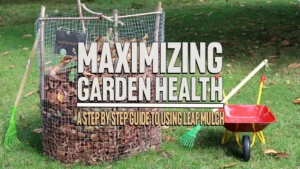

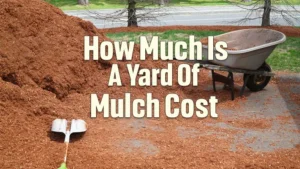
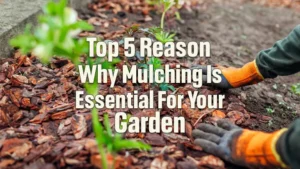

Leave your comment